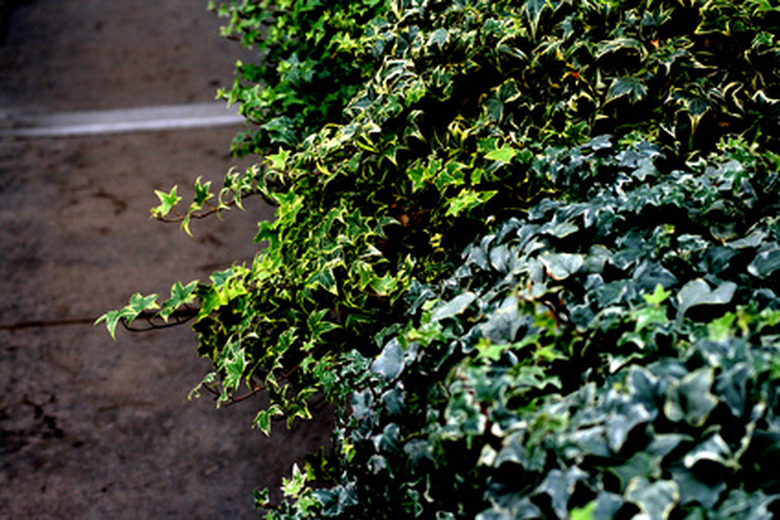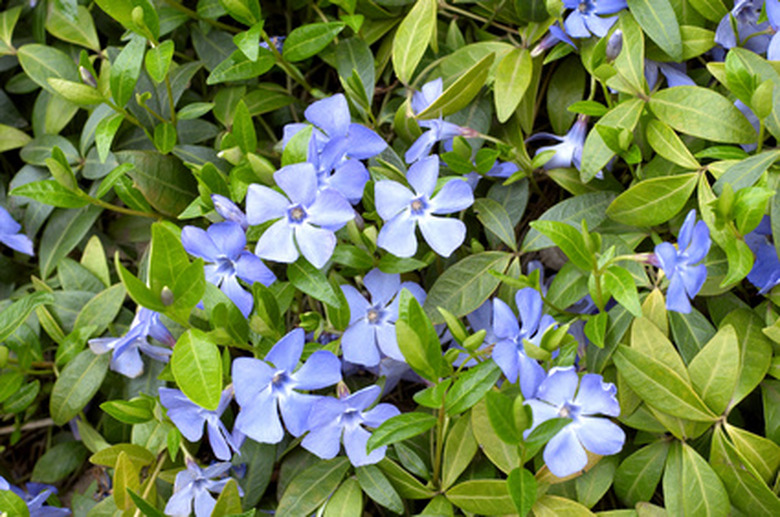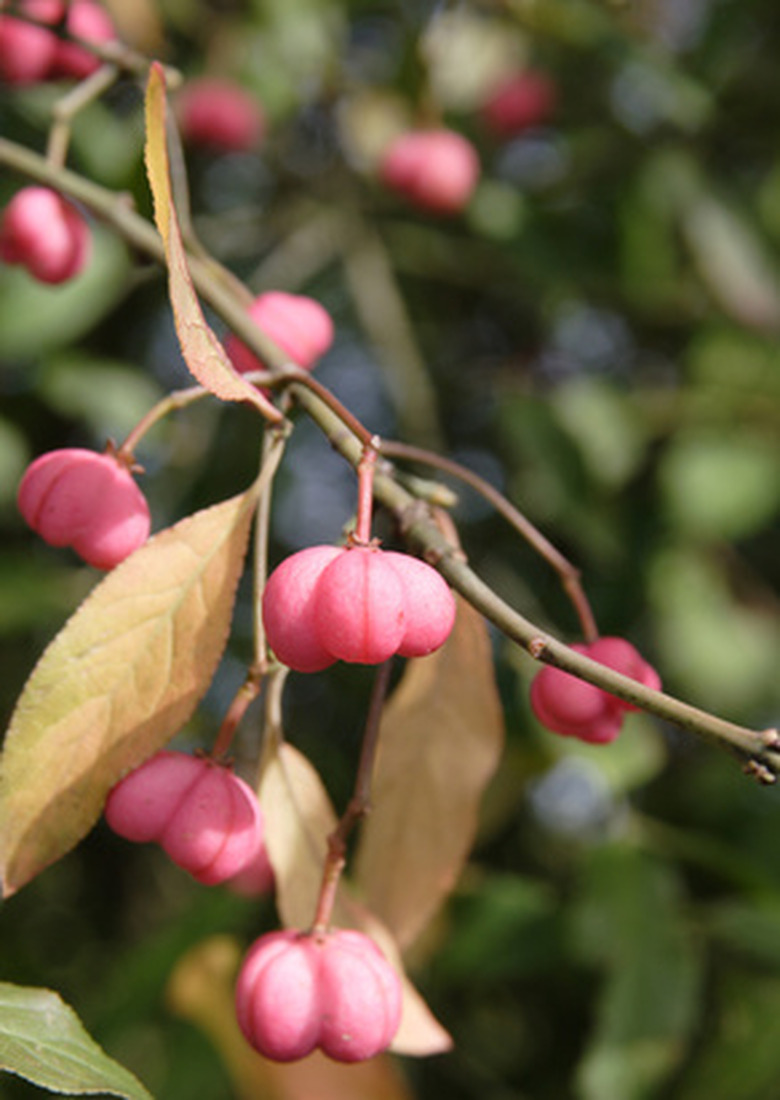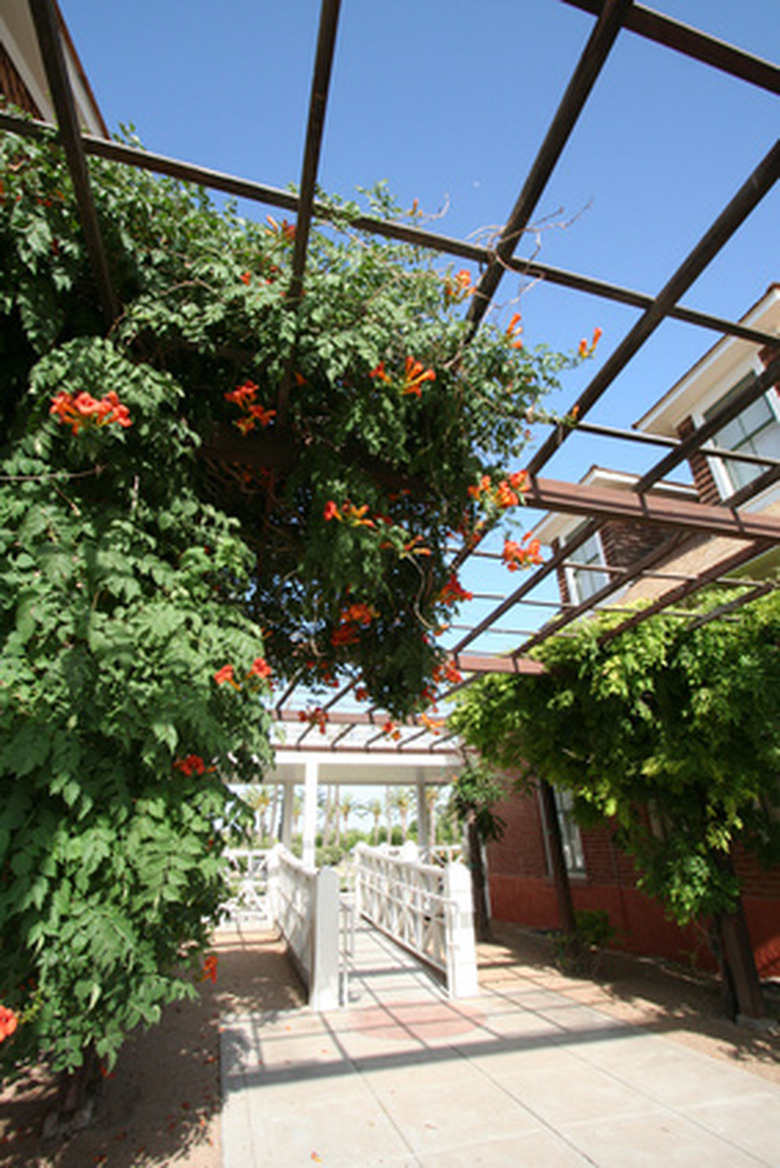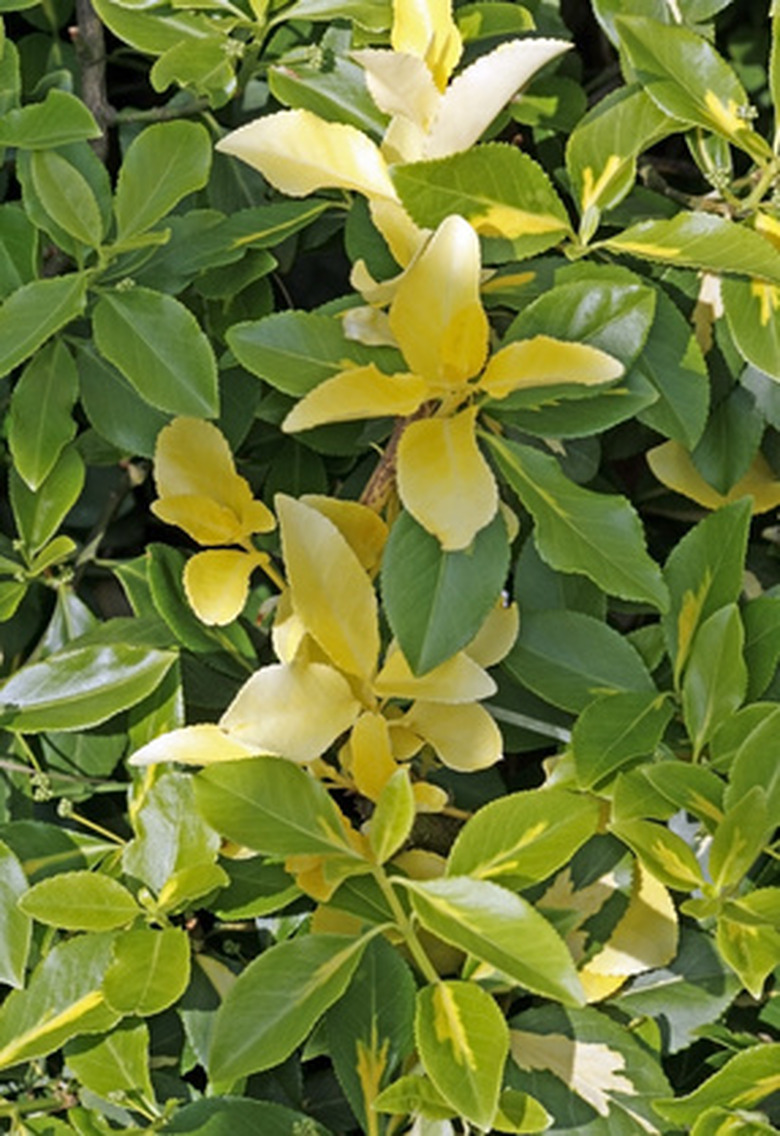Euonymus Vs. Vinca Vine
Ground cover is used around foundations, as an edging and for mass plantings. Ground cover stunts weed growth, prevents soil erosion and covers bare spots. It can be woody or herbaceous, clumping or running, evergreen or deciduous. Ground covers also bring together plants in the garden. They soften landscapes and help to define space. They can provide a transition between the lawn and taller plants. Two types of ground cover are the Euonymus and the Vinca vine.
- Ground cover is used around foundations, as an edging and for mass plantings.
- They can provide a transition between the lawn and taller plants.
Characteristics
The Vinca vine (vinca minor) or periwinkle plant is considered an evergreen. It spreads rapidly to form dense plantings that remain attractive all year. In the spring brilliant blue, violet, or purple flowers bloom. The leaves are a rich glossy dark green color that grow 4 to 6 inches tall. They are non-climbing and prefer part to full shade. The Euonymus fortunei or wintercreeper is also an evergreen. Its growth rate is moderate to rapid. The leaves are 2-inch pairs with wide rounded teeth, and are dark green with silvery veins. The blooms are small and greenish-white, and the plant bears some pink to red fruit casings in the fall that split open to show seeds. It is vine-like and prefers some sun or part shade.
- The Vinca vine (vinca minor) or periwinkle plant is considered an evergreen.
- The blooms are small and greenish-white, and the plant bears some pink to red fruit casings in the fall that split open to show seeds.
How they Grow
Vinca minor spreads by layering, meaning the shoots reach along the ground and root at the axis of the leaves. The new plants form from buds in the axis. This helps make it a good ground cover because it self-propagates and spreads to form thick masses. Wintercreeper is usually fast growing. It has ivy-like roots that hold fast to trees without doing damage.
Where they Grow
Periwinkle is a good evergreen ground cover to use for any shady site–under trees or shrubs, or along banks to stop erosion. Wintercreepers can be used along foundations, as low-hedge edging or in mass plantings. They also like to grow vertically up trees, brick walls, or trellises.
- Vinca minor spreads by layering, meaning the shoots reach along the ground and root at the axis of the leaves.
- Periwinkle is a good evergreen ground cover to use for any shady site–under trees or shrubs, or along banks to stop erosion.
Care
If conditions are dry, water both these plants well. Periwinkle requires a balanced fertilizer in winter and can profit from a cover of compost until spring, though it is not necessary. Wintercreepers require full sun to part shade with moist but well-drained soil. They are exceptionally cold-tolerant.
The Difference
Unlike Vinca, the climbing Euonymus is considered an ecological threat by the Pennsylvania Conservation Department. The traits that make it an attractive ornamental plant–rapid growth and tolerance of harsh conditions–also make it a threat to natural areas. It can beat out native vegetation by taking nutrients from the soil, blocking the sun and forming a dense mat that impedes the growth of native seedlings. The fruits in the fall are fed on by birds and other wildlife, which helps spread the plant to unwanted areas. It can also climb and escape flower gardens or can be carried by water to undisturbed forestry areas.
- If conditions are dry, water both these plants well.
- It can beat out native vegetation by taking nutrients from the soil, blocking the sun and forming a dense mat that impedes the growth of native seedlings.
